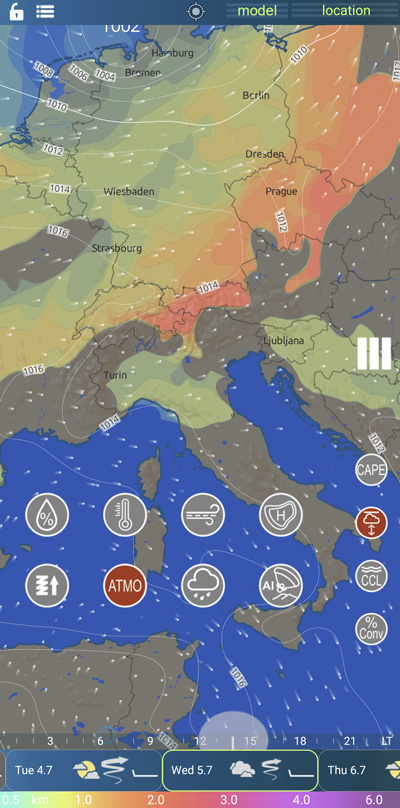Base height of the lower clouds.

The base of the low-level cloud layer, often referred to as the "base of the low cloud deck" or the "base of the boundary layer cloud," is the altitude at which the bottom of the clouds forming the low cloud layer is located. This cloud layer is known as the "stratus" or "stratocumulus" clouds and is typically found at lower altitudes in the atmosphere.
The formation of the base of the low-level cloud layer is influenced by various factors, including moisture content, temperature, and stability of the air mass. When warm, moist air near the surface comes into contact with a colder air mass or experiences upward motion, it can become saturated and condense, forming clouds. These clouds often appear as a uniform layer with a relatively flat and featureless base.
In the context of aviation, the base of the low-level cloud layer is of particular importance for pilots and air traffic controllers. It determines the minimum visibility and cloud clearance requirements for safe flight operations. When the cloud base is low, it can limit visibility and restrict visual navigation. Pilots need to be aware of the cloud base altitude to ensure proper altitude selection, especially during takeoff, landing, and approach phases of flight.
Additionally, the presence of a low cloud base can have implications for visual flight rules (VFR) and instrument flight rules (IFR) operations. Under IFR conditions, pilots rely on instruments and air traffic control for navigation and separation, while under VFR conditions, pilots primarily navigate by visual reference to the ground and other landmarks. If the cloud base is low, it may require pilots to operate under IFR or seek alternative routes to avoid the clouds and maintain visual reference to the ground.
Understanding the formation and characteristics of the low-level cloud base is essential for flight planning and decision-making. Meteorological forecasts and observations provide information on cloud bases, allowing pilots to assess the potential impact on their planned routes and adjust their strategies accordingly. It is crucial to stay informed about the current cloud base conditions, as they can change rapidly and affect the safety and efficiency of flight operations.